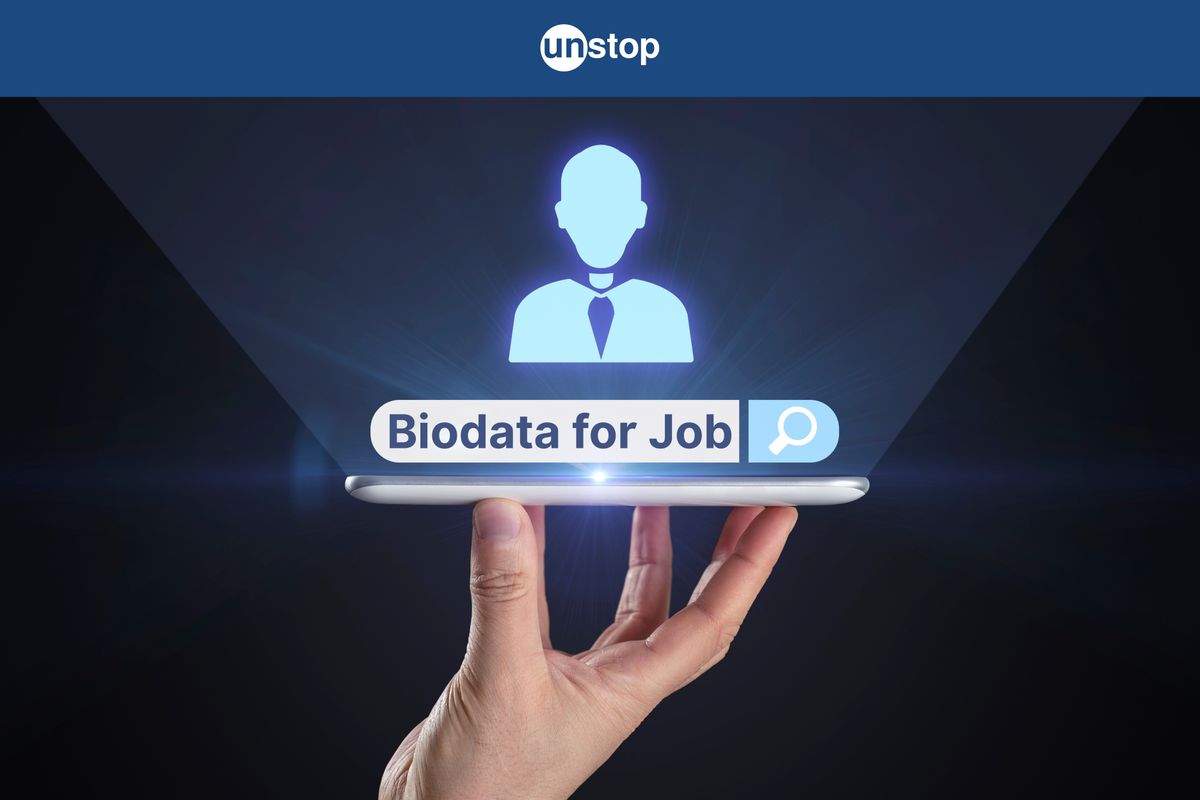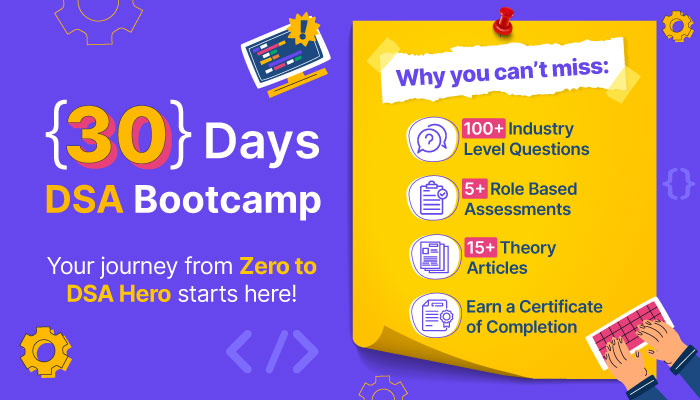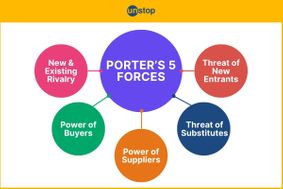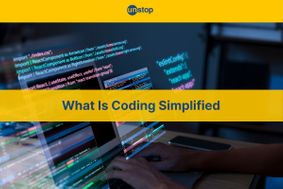- Self-Introduction For Freshers: Importance
- Components Of An Effective Self-Introduction
- How To Craft A Compelling Self-Introduction
- Self-Introduction for Freshers: Samples
- How To Highlight Your Qualifications & Experiences
- Incorporating Personal Interests & Future Plans
- Mastering Verbal & Non-verbal Communication Techniques
- Tailoring Your Introduction For Different Job Roles
- Common Mistakes To Avoid During Self-Introductions
- Conclusion
- Frequently Asked Questions (FAQs)
- Importance Of Extracurricular Activities In Resumes
- Types Of Extracurricular Activities To Include
- Best Extracurricular Activities For Different Fields
- Listing Extracurricular Activities In A Resume
- Adding Activities In The Education & Achievement Sections
- Soft Skills Gained From Extracurricular Activities
- Tailoring Activities Relevant To The Job Application
- Tips For Effective Inclusion Of Extracurricular Activities In Your Resume
- Frequently Asked Questions (FAQs)
- Importance Of Declining A Job Offer Respectfully
- Politely Decline A Job Offer With Gratitude
- Practical Tips For Declining Through Email
- Declining A Job Offer Over The Phone
- Declining After Acceptance Of Job Offer
- Salary, Timing, & Other Offers As Reasons
- Positive Relationship After Declining
- Frequently Asked Questions (FAQs)
- What is a Salary Increment?
- Factors Affecting Salary Increment
- Procedure for Salary Increment
- Formula to Calculate Salary Increment
- Formula to Calculate Salary Increment Percentage
- Benefits of Salary Increment
- How to Negotiate A Fair Salary Increment
- Importance Of Transparency In Salary Increments
- Making Better Financial Plans After Salary Increment
- Resignation After or Before Salary Increment
- Frequently Asked Questions (FAQs)
- Job Offer Acceptance Letter: Meaning & Importance
- Key Components of a Job Acceptance Letter Explained
- Job Offer Acceptance Letter Template
- Accepting a Job Offer via Email: Important Tips
- Job Offer Acceptance Letter Samples
- Composing A Job Offer Acceptance Letter: Key Tips
- Post-Acceptance Protocol
- Conclusion
- Frequently Asked Questions (FAQs)
- What is a Provisional Certificate?
- Provisional Certificate Application Process
- Sample Of A Provisional Certificate
- Benefits Of a Provisional Certificate
- Conclusion
- Frequently Asked Questions (FAQ)
- Definition Of Your Current CTC & Expected CTC
- Factors To Consider During Salary Negotiation
- Tips & Examples To Answer What Salary Do You Expect
- Understanding How Your CTC Is Calculated
- Crafting & Presenting Your Current CTC Effectively
- How To Write Current CTC & Expected CTC In Email
- Analyzing Detailed Breakdown Of Your CTC
- Conclusion
- Frequently Asked Questions (FAQs)
- Definition & Purpose Of Notice Period
- Importance Of Notice Period
- Types Of Notice Period
- Tasks & Expectation During Notice
- Notice Period Format Sample
- Other Aspects Related To Notice Period
- Conclusion
- Frequently Asked Questions (FAQs)
- Most Common Reasons for Job Change
- Current Trends Influencing Job Changes (2024-2025)
- Tips to Craft Your Best Answer for Job Change
- Conclusion
- Hard Work Vs Smart Work- Difference
- Examples Of Hard Work Vs Smart Work
- Ways To Hone Your Smart Work Skills
- Utilizing SMART Goal Approach
- Essence Of Hard Work
- Essence Of Smart Work
- Combining Benefits Of Hard & Smart Work
- Enhancing Efficiency Work Approach
- Closing Thoughts
- Frequently Asked Questions
- Defining What Is Probation Period
- Activities During The Probation Period
- Salary During The Probation Period
- Importance Of Completing The Probation Period
- Probation Period Extension Explained
- How To Successfully Complete Probation Period
- Closing Thoughts
- Frequently Asked Questions (FAQs)
- Definition & Its Origin Of Garden Leave
- What Happens To An Employee During Garden Leave?
- Advantages Of Garden Leave
- Disadvantages Of Garden Leave
- Duration Of Garden Leave & Its Impact
- Identifying Employees Suitable For Garden Leave
- Best Time To Use Garden Leaves
- When To Avoid Gardening Leave
- Consequences Of An Employee Declining Garden Leave
- Employers' Guide To Making The Most Of Garden Leave
- Rights And Obligations Under Garden Leaves
- Summary
- Frequently Asked Questions (FAQs)
- What is an Interview?
- What Do Companies Look For During An Interview?
- Types Of Interview Formats
- Types Of Interview Questions
- Interview Tips For Freshers
- Conclusion
- Frequently Asked Questions (FAQs)
- Group Discussion & Its Purpose Explained
- Importance Of Group Discussion
- Types Of Group Discussion
- Characteristics Of Group Discussion
- Skills And Success Tips Of Group Discussion
- Mistakes & Topics To Avoid In Group Discussion
- Final Remarks
- Frequently Asked Questions
- Understanding What Job Application Is
- Nitty Gritty Of Job Application
- Step-by-step Guide On How To Apply For A Job
- Effective Tips For Job Applicants
- Conclusion
- Frequently Asked Questions (FAQs)
- Significance Of Emailing Your Resume
- What To Write In An Email When Sending A Resume
- Samples Emails When Sending A Resume
- Final Remarks
- Frequently Asked Questions (FAQs)
- Decoding Dress Code For Interview
- Interview Dress Code For Men
- Interview Dress Code For Women
- Outfits To Be Avoided For A Job Interview
- Conclusion
- Frequently Asked Questions (FAQs)
- Understanding Biodata in Job Applications
- Crafting an Effective Biodata for Your Job Search
- 10 Tips for an Effective Biodata
- Biodata vs. Resume vs. CV: Understanding the Differences
- Understanding a Biodata Format (Sample Template)
- Frequently Asked Questions (FAQs)
- Creating An Appealing Resume For Job Search
- 7 Types Of Resumes For Job Application
- Tips For Crafting An Effective Resume
- Conclusion
- Frequently Asked Questions (FAQs)
- Definition Of CTC
- Understanding The Components Of CTC
- Formula To Calculate CTC
- Example Of CTC Breakdown
- Benefits Of Cost To Company
- Understanding Gross Salary And Net Salary
- Conclusion
- Frequently Asked Questions (FAQs)
- Understanding Your Ambition In Life
- How To Answer The Question During Interview
- Do’s And Don'ts While Answering The Question
- Examples Of Sample Answers
- Summary
- Frequently Asked Questions
- Definition & Purpose Of An Apology Letter
- Understanding The Basic Components
- Knowing When To Write
- Tips To Craft An Effective Apology Letter
- Mistakes To Be Avoided
- Example & Format Of An Apology Letter
- Summary
- Frequently Asked Questions
- What Is A Job & What Is Leaving A Job
- Top 10 Reasons For Leaving A Job
- How To Prepare When Planning To Leave A Job
- Tips To Explain Your Departure To Your Employer
- Sample Answers For Leaving A Job
- Conclusion
- Frequently Asked Questions (FAQs)
- Annual Income & Calculation Explained
- Formula For Annual Income Calculation
- Examples Of Annual Income Calculation
- Gross Income Vs. Net Income
- Conclusion
- Frequently Asked Questions
- Understanding What Is Severance Pay
- Importance Of Understanding Severance Pay
- Why Companies Offer Severance Pay
- Essential Components Of Severance Package
- Eligibility Conditions For Severance Packages
- Tax Implications Of Severance Pay
- Conclusion
- Frequently Asked Questions (FAQs)
- Understanding A Job Application Letter
- Format Of A Job Application Letter
- Importance Of A Well-Crafted Application Letter
- Tips For Crafting A Compelling Job Application
- Sample Letters For Various Profiles
- Conclusion
- Frequently Asked Questions (FAQs)
- Meaning Of Job Profile & Purpose
- Key Components Of A Job Profile
- Benefits Of Job Profiles For Employers
- 5 Best Tips For Crafting An Effective Job Profile
- Common Pitfalls To Avoid In Job Profile Descriptions
- Job Profile Vs Profile Summary
- Summary
- Frequently Asked Questions (FAQs)
- Understanding Full and Final Settlement
- Components of Full and Final Settlement
- Pre-Requisite to Calculating FnF
- Calculating FnF: Process and Timing
- Final Settlement Letters
- Final Remarks
- Frequently Asked Questions
- Definition Of Teamwork Skills
- Types Of Teamwork Skills
- Benefits Of Teamwork Skills
- Strategies For Improvement Of Skills
- Showcasing Teamwork Skills Effectively
- Conclusion
- Frequently Asked Questions (FAQs)
- What are the Barriers of Communication?
- Types of Barriers of Communication
- Top Barriers of Communication: The Most Common Culprits
- Strategies to Overcome Communication Barriers
- Frequently Asked Questions (FAQs)
- Definition & Factors Of Workplace Anxiety
- Recognizing Signs & Symptoms Of Anxiety
- Strategies & Tips To Handle Workplace Anxiety
- Summary
- Frequently Asked Questions (FAQs)
How to Write Biodata For Job Applications? Tips, Format & Samples

Creating a standout biodata is more important than ever in today’s competitive job market. Whether you're applying for your first job or looking to switch careers, a well-organized biodata can make a strong first impression and help you land interviews. In this article, you’ll learn how to craft an effective biodata for job applications, explore key components, view sample formats, and understand how it differs from a resume and CV.
Understanding Biodata in Job Applications
Before we dive into creation, let's understand what biodata is and why it holds significance, particularly in certain hiring contexts.
What is Biodata?
At its core, biodata (short for biographical data) is a formal document containing detailed personal information alongside professional and educational qualifications. Unlike a resume or CV, which primarily focuses on professional history, biodata often includes more personal details.
Importance of Biodata
A well-crafted biodata is crucial for job applications, especially where it's standard practice. Here's its core importance:
- Strong First Impression: It's often the first document an employer sees, showcasing your professionalism.
- Holistic Overview: Provides a comprehensive snapshot, including personal details, hobbies, and family background, alongside professional and educational qualifications.
- Aids Screening: Its standardized format helps recruiters quickly assess your fit for the role.
- Builds Trust: Openly sharing details fosters an impression of honesty and transparency.
- Meets Requirements: Essential for compliance in regions or roles where it's mandatory.
Crafting an Effective Biodata for Your Job Search
Creating a powerful biodata demands attention to detail and a strategic approach. Here's what to focus on:
Essential Components of a Strong Biodata
To provide employers with a comprehensive snapshot, your biodata should consistently include:
- Personal Details: Your full name, contact information (email, phone number), address, date of birth, gender, marital status, and nationality.
- Educational Qualifications: A clear listing of your academic degrees, certifications, institutions attended, and graduation dates.
- Work Experience: Details of your past employment, including job titles, company names, employment dates, and key responsibilities or achievements.
- Skills & Competencies: Both technical skills (e.g., software proficiency, coding languages) and soft skills (e.g., teamwork, communication, leadership).
- Personal Attributes & Interests: Relevant hobbies, interests, and personal traits that align with the role or company culture.
- Professional Summary/Objective: A brief, impactful introduction highlighting your core strengths and career goals.
- References: Details of professional references, often provided upon request.
Formatting & Reviewing for Impact
Before finalizing, focus on consistent formatting and thorough review.
- Consistent Formatting: Utilize clear, readable fonts (e.g., Arial, Calibri, Times New Roman) and consistent font sizes throughout. Use bold headings for each section and bullet points for easy scanning.
- Professionalism: Maintain a clean, uncluttered layout. Avoid excessive graphics or fancy designs unless specifically required for a creative role.
- Proofreading: Review the entire document meticulously for any errors in spelling, grammar, or punctuation. A single typo can undermine your professionalism.
- Accuracy: Double-check all dates, contact numbers, email addresses, and factual claims. Accuracy is paramount.
- ATS-Friendliness: While biodata is less common for ATS-heavy environments, a clean format helps. Use standard headings and clear text.
10 Tips for an Effective Biodata
To truly make your biodata stand out, incorporate these strategic tips:
- Keep It Clear and Concise: Opt for a clean, easy-to-read layout. Use clear headings and bullet points to break up text. Avoid jargon and unnecessary details; focus only on relevant information.
- Ensure Accurate Personal Information: Provide your current and accurate full name, phone number, professional email, and permanent address. Accuracy builds trust.
- Craft a Strong Professional Summary: Begin your biodata with a brief, impactful summary or career objective. This should highlight your key skills, experience, and career aspirations, tailored to the specific role.
- Detailed Educational Background in Order: List your educational qualifications in reverse chronological order (most recent first). Include institution names, degrees obtained, and graduation dates.
- Showcase Relevant Work & Volunteer Experience: Detail your professional history starting with your most recent job. Include job title, company name, employment dates, and key responsibilities. Don't forget to add relevant volunteer work or internships, especially for freshers.
- Highlight Diverse Skills & Languages: Create dedicated sections for both technical skills (e.g., software, programming languages) and soft skills (e.g., communication, problem-solving). Also, list any languages you know, along with your proficiency level.
- Quantify Achievements & Certifications: Include significant achievements, awards, and relevant training programs or certifications. Whenever possible, quantify your achievements with numbers (e.g., "Increased sales by 20%," "Managed a team of 5").
- Include Relevant Personal Attributes & Hobbies: Mention personal traits (e.g., teamwork, leadership) that align with the job. Include hobbies and interests that demonstrate positive personality traits or relevant skills (e.g., "reading" for research roles, "team sports" for collaborative environments).
- Attach Professional Photograph & References (If Applicable): If required or customary in the region, attach a recent, professional passport-sized photograph. Provide references (name, job title, contact details, relationship) only if specifically asked, and always ensure you have their prior permission.
- Proofread Diligently & Maintain Digital Presence: Thoroughly proofread for any spelling, grammar, or formatting errors. Ensure consistency in font styles, sizes, and bullet points throughout. If applicable, include links to professional online profiles such as LinkedIn or a personal portfolio website.
Looking for the perfect JOB or INTERNSHIP? Explore hundreds of job roles across multiple domains on Unstop!
Biodata vs. Resume vs. CV: Understanding the Differences
While often confused, biodata, resumes, and CVs serve distinct purposes and are used in different contexts.
|
Feature |
Biodata |
Resume |
CV (Curriculum Vitae) |
|
Focus |
Personal details, family background, hobbies, and basic professional/educational info. |
Concise summary of work experience, skills, and achievements relevant to a specific job. |
Comprehensive, detailed account of academic background, research, publications, presentations, awards, and professional history. |
|
Length |
Varies, can be 1-3 pages, depending on detail. |
Typically 1-2 pages. |
Can be 2-10+ pages, depending on experience. |
|
Content |
Personal info (DOB, gender, marital status, religion, nationality), hobbies, basic education, and work. |
Work history (reverse chronological), skills, education, achievements (tailored). |
All academic degrees, research projects, publications, conferences, teaching experience, grants, and professional associations. |
|
Purpose |
Often, for initial screenings, government jobs, marriage proposals, or roles where personal details are highly relevant. |
Marketing tool to secure an interview for a specific job. Highly customizable. |
Comprehensive record of academic and professional career, typically for academia, research, and international applications. |
|
Common Use In |
South Asia (India), some parts of Africa, and traditional industries. |
North America and Europe are common across most industries. |
Academia, scientific research, and medical fields globally, often in the UK/Ireland, for general jobs. |
Understanding a Biodata Format (Sample Template)
A well-structured biodata isn't just about listing information; it's about presenting your profile in a clear, professional, and easily digestible manner. An organized biodata format guides the recruiter's eye and ensures all essential details are quickly found.
Use this comprehensive template as a clear blueprint to build your own compelling document, tailoring each part to your unique profile and the job's specific requirements.
Priya Sharika
New Delhi, India
+91 9876XXXXXX
priya.sharika@gmail.com
linkedin.com/in/priya.sharikaProfessional Summary
Highly motivated Data Analyst with 1 year of progressive experience in market research and business intelligence since completing a Master's degree. Proven expertise in SQL, Python (Pandas, NumPy), Excel, and Tableau, with a strong track record of translating complex data into actionable insights for strategic decision-making. Seeking to leverage my skills and experience in a challenging role at XYZ Corp to drive data-driven growth.
Personal Details
DOB: 15/07/1998
Gender: Female
Marital Status: Single
Nationality: Indian
Languages: English (Fluent), Hindi (Native), French (Intermediate)
Hobbies: Reading historical fiction, Volunteering (animal shelters), Trekking, Digital photographyEducation
Master of Science (M.Sc) in Data Science
University of Delhi, May 2024
Relevant Coursework: Machine Learning, Big Data Analytics, Statistical Modeling
Thesis: "Predictive Analytics for E-commerce Customer Churn"
Bachelor of Technology (B.Tech.) in Computer Science
SRM Institute of Science and Technology, Chennai, May 2022Work Experience
Data Analyst, Innovate Solutions Pvt. Ltd., Bengaluru July 2024 – Present
Developed and maintained SQL & Python scripts (ETL), boosting data accessibility by 40%.
Created Tableau dashboards, cutting report generation time by 25%.
Performed comprehensive market research, providing insights that contributed to a 10% market share increase.
Junior Data Intern, Tech Insights Hub, Chennai May 2021 – Aug 2021
Assisted senior analysts in data cleaning and preliminary analysis for client projects.
Prepared weekly data trend reports using Excel.Skills & Competencies
Technical: SQL, Python (Pandas, NumPy, Matplotlib, Seaborn), R, Tableau, Power BI, Advanced Excel, Google Analytics, Data Visualization, Statistical Analysis, Predictive Modeling.
Soft: Analytical Thinking, Problem-Solving, Communication, Teamwork, Attention to Detail, Adaptability.Achievements & Certifications
Certified Data Analyst, Google Analytics Academy, 2023 (This could have been completed during Master's)
Awarded "Employee of the Quarter" at Innovate Solutions Pvt. Ltd. for outstanding contribution to the Q3 2024 Market Research Project.
Successfully optimized data pipelines, leading to a 15% reduction in data processing time (achieved in late 2024/early 2025).Personal Attributes
Highly analytical, results-oriented, proactive, quick learner, and adept at explaining technical concepts.
References
Available upon request.
Conclusion
Now that you've gained a comprehensive understanding of biodata – its definition, importance, key components, and how it differs from resumes and CVs – you're well-equipped to make a strong impact on your job hunt. Remember to apply the tips, leverage tools like MS Word or Google Docs for formatting, and always tailor your biodata to the specific job requirements.
Your biodata often serves as the initial point of contact for potential employers. By ensuring it effectively showcases your skills, experiences, and personal attributes, you're set to leave a lasting impression and increase your chances of securing valuable opportunities.
Frequently Asked Questions (FAQs)
1. Is there any difference between a biodata, resume, and CV?
Yes, significant differences exist. A biodata focuses heavily on personal details (DOB, gender, marital status, hobbies) in addition to professional and educational history. A resume is a concise, tailored summary (1-2 pages) highlighting work experience, skills, and achievements relevant to a specific job. A CV (Curriculum Vitae) is an in-depth document (2+ pages) detailing academic background, research, publications, presentations, and awards, typically used in academia or research.
2. How can I craft an effective biodata for job applications?
To craft an effective biodata, include relevant personal details, educational qualifications (reverse chronological), work experience (quantifying achievements), a strong skills section (technical and soft), and any notable achievements or certifications. Use clear formatting, bullet points, and always tailor the content to the specific job requirements.
3. Is using MS Word or Google Docs better for creating biodata?
Both MS Word and Google Docs are highly suitable for creating biodata. Your choice depends on personal familiarity and preference. Google Docs offers excellent cloud storage, easy sharing, and real-time collaboration features. MS Word provides extensive formatting options and is a professional standard.
4. What are some tips for achieving excellence in biodata creation?
For an excellent biodata, ensure 100% accuracy in all details. Use a clean, professional font and layout for optimal readability. Clearly highlight your key achievements and skills that are most relevant to the job. Keep it concise yet informative, avoiding unnecessary clutter. Most importantly, proofread thoroughly multiple times to eliminate any errors.
5. Why is it important to understand biodata when applying for jobs?
Understanding biodata is crucial because it helps you present yourself effectively in contexts where this format is expected. A well-crafted biodata showcases your qualifications, relevant personal attributes, and experiences in a structured manner, significantly increasing your chances of standing out among other applicants and securing job opportunities.
Suggested reads:
- What Is Group Discussion- Definition, Importance, Types & Tips
- What To Write In An Email When Sending A Resume (Tips & Samples)
- Loud Quitting - What Lies Behind The Noise & How HRs Can Navigate
- Hard Work Vs Smart Work- Difference, Approach, Example & Benefit
- What Is Probation Period- Definition, Importance & Success Tips
Instinctively, I fall for nature, music, humor, reading, writing, listening, traveling, observing, learning, unlearning, friendship, exercise, etc., all these from the cradle to the grave- that's ME! It's my irrefutable belief in the uniqueness of all. I'll vehemently defend your right to be your best while I expect the same from you!
Login to continue reading
And access exclusive content, personalized recommendations, and career-boosting opportunities.
Subscribe
to our newsletter

















Comments
Add comment